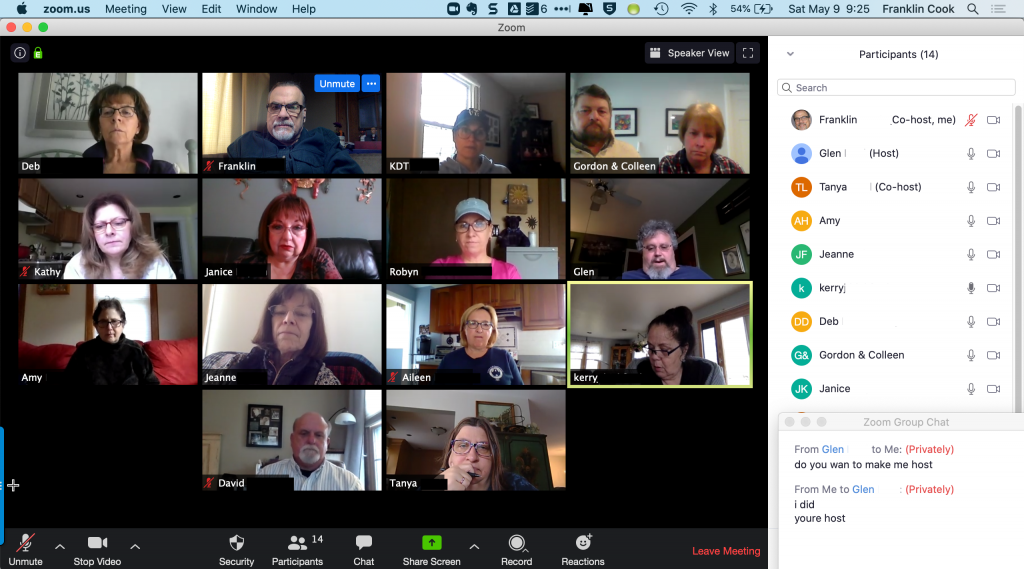 This screenshot is of a Saturday morning meeting of Massachusetts peer grief support group facilitators.[/caption]
This screenshot is of a Saturday morning meeting of Massachusetts peer grief support group facilitators.[/caption]
Virtual meetings are serving a vital purpose during this highly unusual and frightening time when the COVID-19 pandemic has eliminated or altered face-to-face services. Many people are living in isolation and unable to connect with the outside world due to the social restrictions placed on all of us. Connecting via video to others who are experiencing similar circumstances offers a way to share the ups and downs, offer support and learn how others are coping.
Video technology is a great tool for frontline care providers to share their own feelings about what they are experiencing and witnessing. For the recovery community, as well, it is a lifeline to a network of support during a difficult time when there are no public gatherings and everything about getting help for substance-use issues is even more challenging.
SADOD is keeping up with these changes by providing technical assistance and support to peer grief group facilitators and other people we serve. Group facilitators and SADOD staff have been meeting weekly by video on Saturday morning to discuss the challenges groups are facing and to develop some guidelines for virtual grief support meetings being held with Zoom.
The guidelines are a work in progress, with the goal of improving the effectiveness and safety of virtual peer support as it continues to expand as a critical means of mutual help. Please take a look at the guidelines, and offer us any feedback you might have at [email protected].
Here is a list of general steps to take when conducting any online group.
- Become familiar with the platform you have chosen to hold your meetings (Zoom, Go to Meeting, etc.) before you invite others to participate.
- Follow all recommendations for safety to increase security and decrease risks. Here are the steps we take for security in a Zoom meeting, which include instructions on how to remove someone from a meeting.
- Whenever possible, have a co-facilitator to help troubleshoot any technical or group problems that arise.
- Be sure to review group sharing guidelines at the beginning of the meeting. These will vary from one group to another. Here is an example of a group structure that includes sharing guidelines for face-to-face meetings that some facilitators are adapting for virtual grief support groups.
- It is especially important for participants to understand the confidential nature of virtual support groups. This is enhanced by participating in meetings in a quiet space away from family and pets, as well as using the mute button.
Please see the more detailed suggestions in our guidelines, which we hope will help you create a safe meeting space for all who join in.
